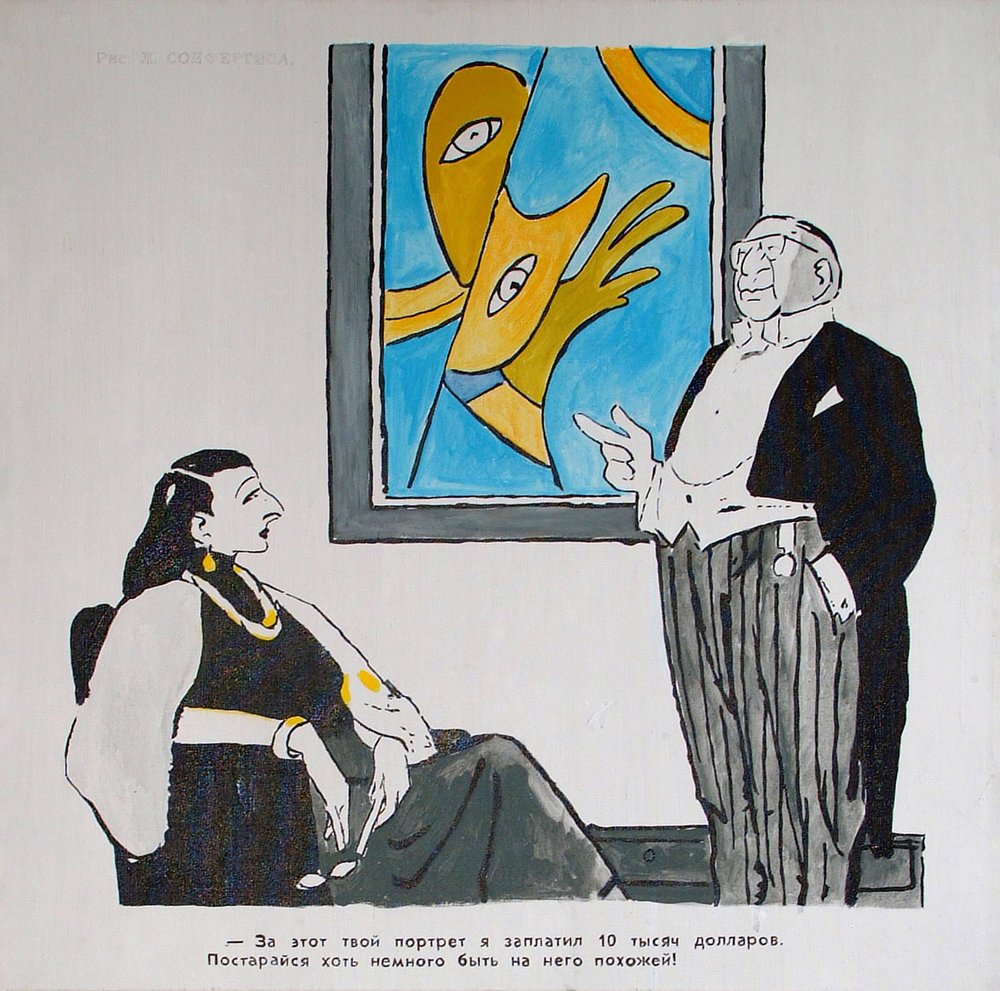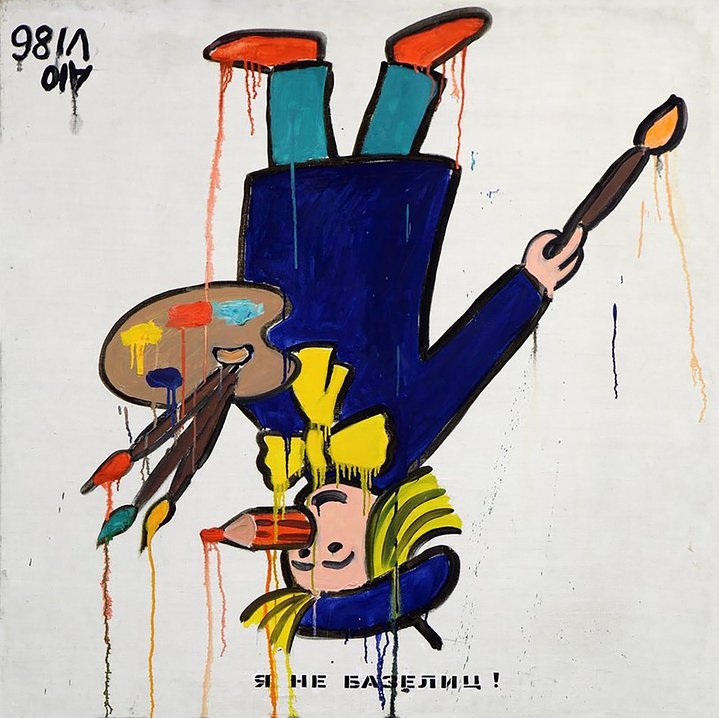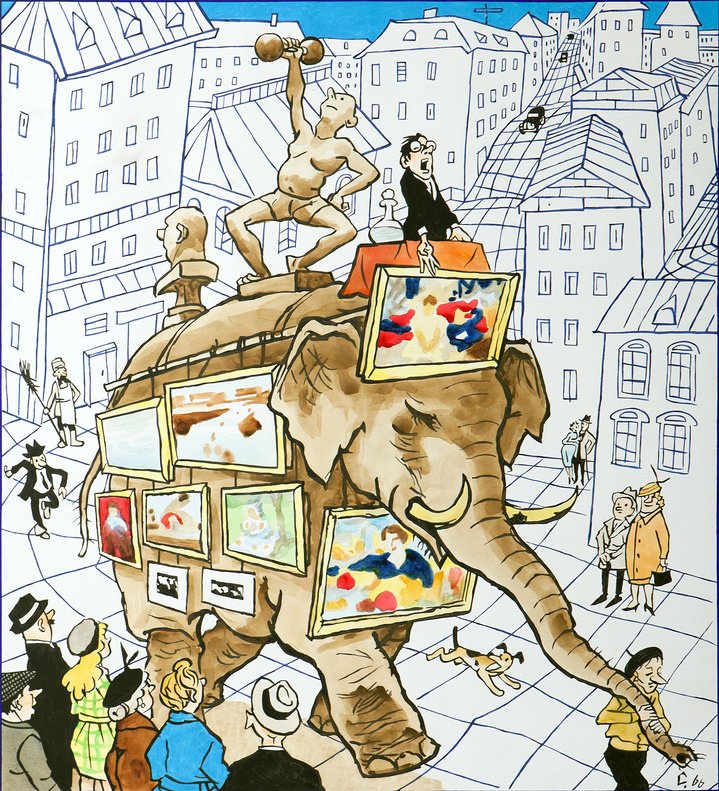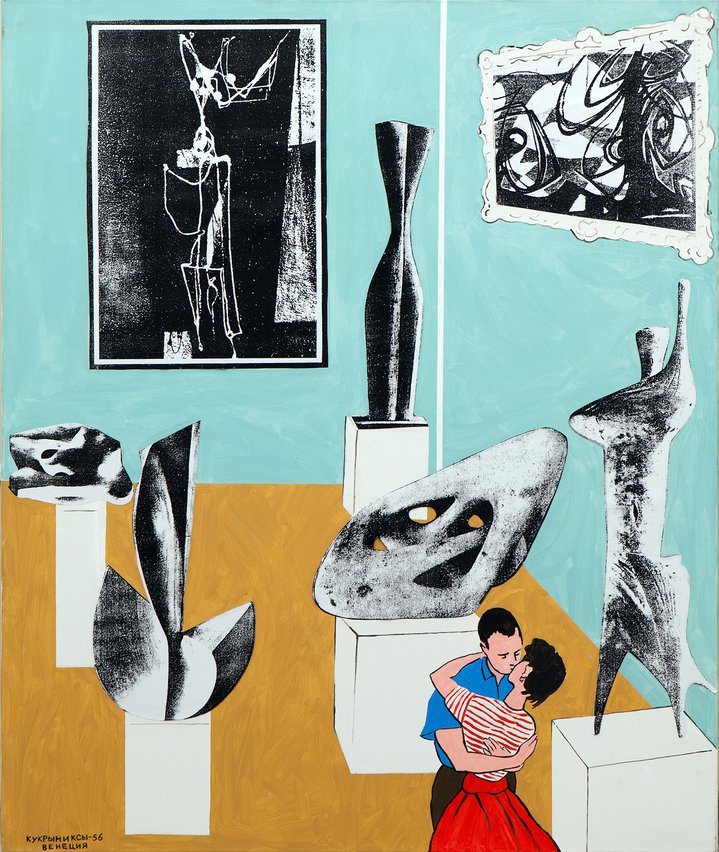Yuri Albert as someone else: Berlin solo show

Yuri Albert. The picture of a caricature by Leonid Soyfertis (Crocodile #13,1953) 1996. Courtesy Diehl Gallery
Moscow conceptualist Yuri Albert has unveiled a retrospective exhibition at Berlin’s Diehl Gallery.
Legendary Moscow conceptual artist Yuri Albert has been living in Cologne since the early 1990s. He has had numerous solo and group exhibitions throughout Germany and Europe. Gallerist Volker Diehl and Albert had been talking about doing an exhibition for two decades but things somehow never worked out until now. Today finally they are looking at a permanent collaboration. When it comes to artists who are well established, sometimes it can be refreshing to revisit the works through new eyes. The curator they have appointed to stage this exhibition is Alina Şerban, curator, art historian and independent editor from Romania.
The title of the exhibition, ‘Yuri Albert, I is Someone Else’, is intentionally sarcastic. It refers to Albert's own well-known series ‘I am not...’, which he began back in 1980, in which he copied the style of a famous artist with the addition of the phrase: ‘I am not Jasper Johns’, ‘I am not Kabakov’, and so on. The grammatical mistake in the English title feels like an expression of distance in relation to his own past and the environment of the 1970s and 1980s, when he was discussing ideas about Western art from behind the Iron Curtain without much hope ever of a response. He simultaneously recoiled from the iconic American and European artists, and yet hoped to merge into the stream of international contemporary art.
From this series, the exhibition includes archival photographs documenting the performance ‘I am not Vadim Zakharov’, as well as photographs of the unsanctioned exhibition "AptArt in Plen Air" (1983). Also on display is the canvas "I am not Baselitz!" (1986), in which the image is depicted upside down.
Taken as a whole, the exhibition is a history of the artist's self-portrait, a genre he explored using different techniques and formal approaches over the course of four decades. What is important for Albert is to ask the right questions both of himself and art. His works are a consequence of and a commentary on these very questions. A framed, typewritten text in English is on display in the gallery: The Autoseries (1978-89; 2022). Already in the first of these works, Albert simultaneously uses the language of the Art & Language group and cheerfully comments on it, speaking, for example, about the potentiality of a conceptual art work, rather than its creation.
One of the tasks of the curator was to show the wide scope of techniques the artist has employed. The figurative images on the opposite wall rhyme with the text: graphic self-portraits drawn blindfolded (1998-2018). Early performances are in the display case in the centre. In particular, the famous "J.F. Albert gives all his warmth to the people" (1978-early 80s) and "Household Help" (1978-81). Here the artist’s portrait is defined by his bodily heat and presence and his chosen role in society. In addition, on the wall to the left is the five part painting, Art for the Deaf (1987), in which using arrows and gestures the artist explains what he wants to say using a scheme.
In 2013, Albert had a retrospective at the Moscow Museum of Modern Art with the title "What did the artist want to say with this? The painting series "My favourite books" (2001–2003) is one way of answering this very question. The results are abstract, monochrome canvases painted with the ashes of burnt books from the artist’s personal library. If the content of the books is known, then the meaningfulness of the abstraction is also known. Or not?
That flickering ‘or not?’ is Albert's trademark. The question ‘what is it about?’ and the answer ‘about something completely different’, is all the more fun as the author deliberately and freely borrows techniques and approaches. Diehl also has on display the project ‘I'm Still Alive’ (2017) with Albert's breath recorded on mirrors. 31 mirrors is a month; in 2021 a monumental version of 365 mirrors was shown at The Garage in Moscow. On a semantic level this relates to On Kawara's famous series of 'Everyday Paintings' and his telegrams to his friends with the text 'I am still alive'. One can perhaps look for examples of such an approach among Alicija Kwade's works with hour- and minute-hands. One might also think of Tehching Hsieh with his year-long performance of punching a time card on a special factory clock. But Albert is true to himself. He does not trust the originality of plastic expression, and in any case, art is not a consequence of it. But it's not just the plastic that deceives, its the field of meaning too. His account of his own sojourn among the living is 'about something completely different'.
If you mentally superimpose all of Albert's works and projects one on top of the other, you get a palimpsest with all sorts of physical manifestations around the edges and a white spot in the centre. This Zen void, the clapping of one palm, is the answer to the question. It is what remains if all the physical media are taken away.
In the centre of the gallery stands a sketch boх easel with a built-in (right-hand) gas burner: 'Mucius Scevola', (1995). On request, they turn it on. There you go! Here's a gadget for checking it out.









